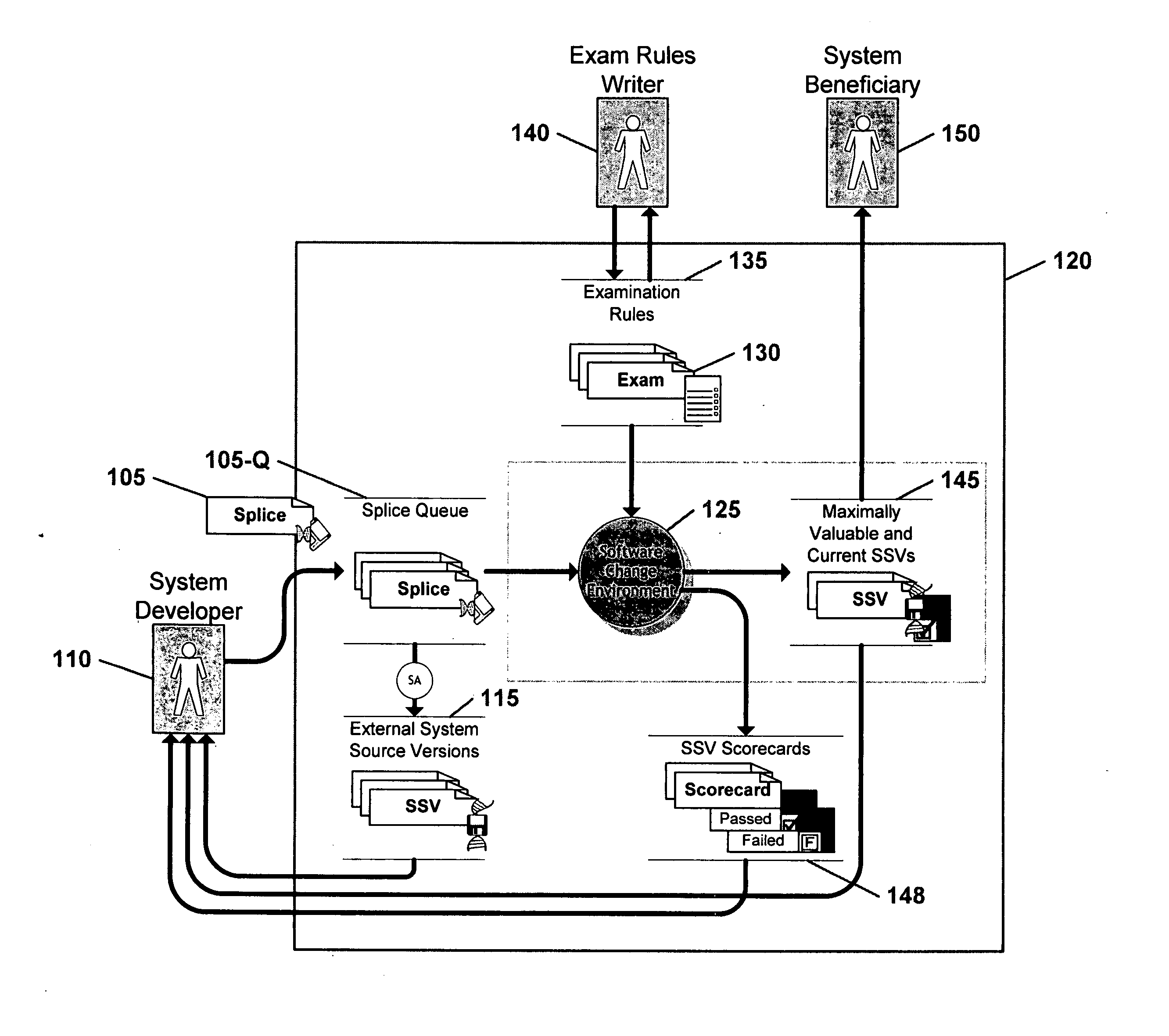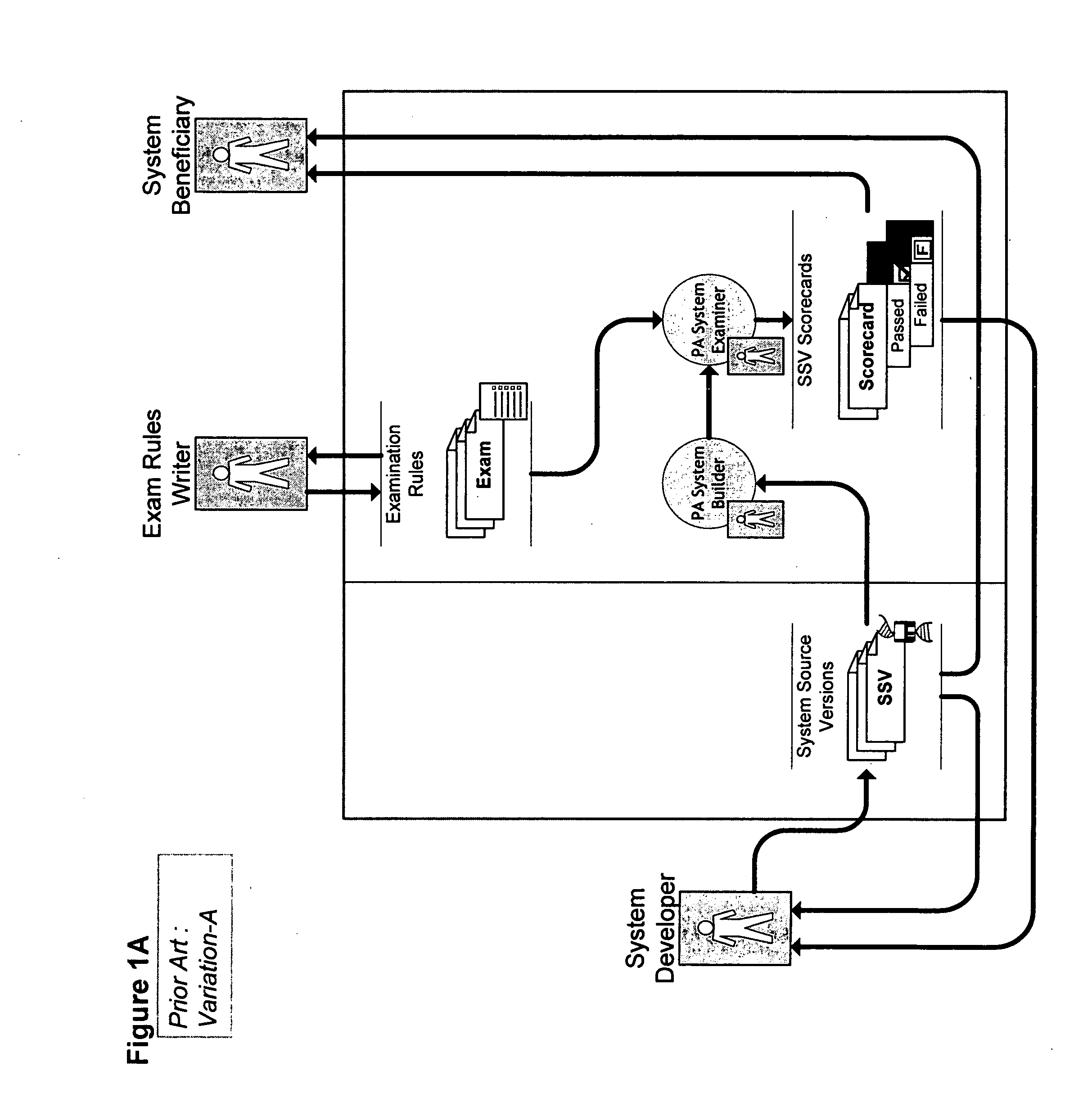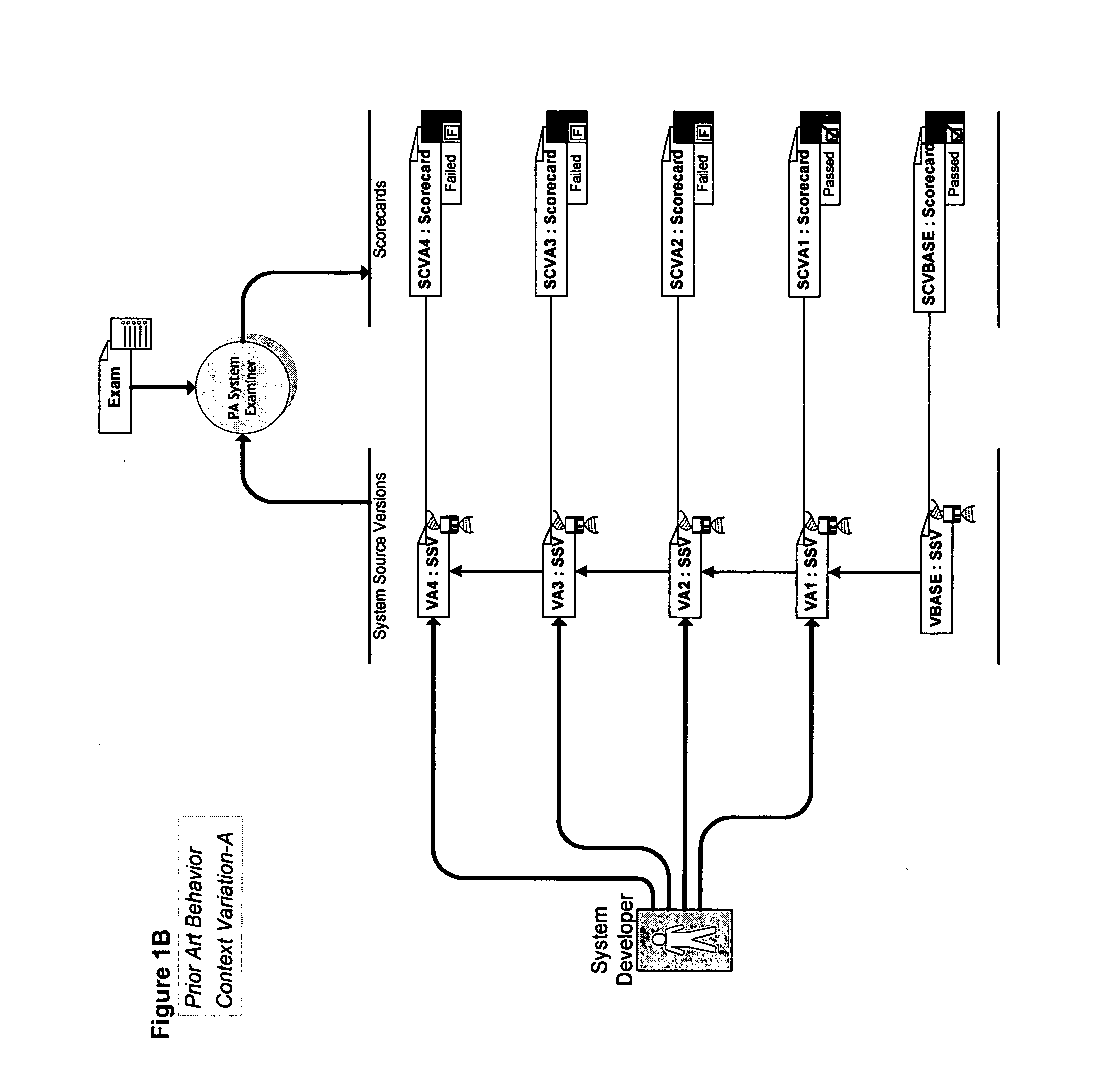Software manufacturing factory
a software manufacturing factory and software technology, applied in the field of software development, can solve the problems of unproductive and unreliable development, failure to execute processes properly, and no more industrialized software development process, and achieve the effects of improving system configuration and process, rapid and automated, and resolving the regression and progression of the software system
- Summary
- Abstract
- Description
- Claims
- Application Information
AI Technical Summary
Benefits of technology
Problems solved by technology
Method used
Image
Examples
Embodiment Construction
[0028] Referring to FIGS. 2A and 2B for two alternate functional block diagrams for illustrating the configuration of a system and the process flow for carrying out changes to a software system. The system includes a system developer working on a client data handling system 110 and a server data handling system 120. The client data handling system 110 generates “splice submissions” for submitting to the server data handling system 120. A “splice”105 is a collection of changes to a software system parceled together into a unit. Beyond the collection of changes made to the software system, a splice includes additional information about the creator of the changes, the time of the changes, the version of the software system the changes are based on, and other contextual and purpose-oriented augmentations. Within the software industry, a splice is analogous to the term “change set”, “patch”, “delta”, etc. Although the preferred embodiments of this invention are described with a term spli...
PUM
 Login to View More
Login to View More Abstract
Description
Claims
Application Information
 Login to View More
Login to View More - R&D
- Intellectual Property
- Life Sciences
- Materials
- Tech Scout
- Unparalleled Data Quality
- Higher Quality Content
- 60% Fewer Hallucinations
Browse by: Latest US Patents, China's latest patents, Technical Efficacy Thesaurus, Application Domain, Technology Topic, Popular Technical Reports.
© 2025 PatSnap. All rights reserved.Legal|Privacy policy|Modern Slavery Act Transparency Statement|Sitemap|About US| Contact US: help@patsnap.com



